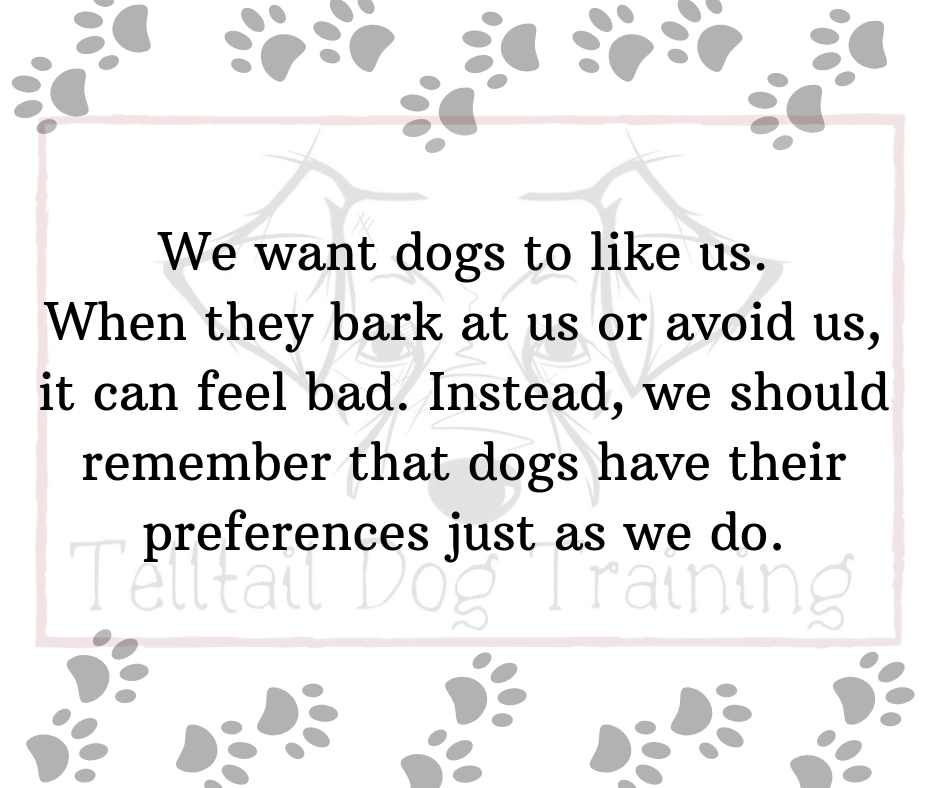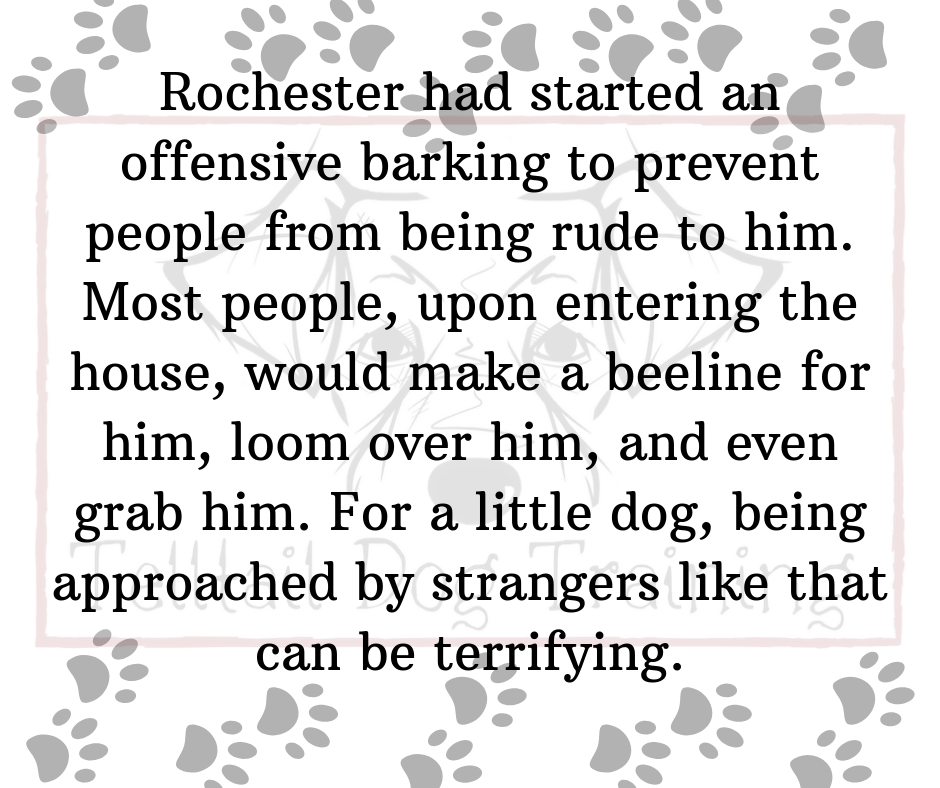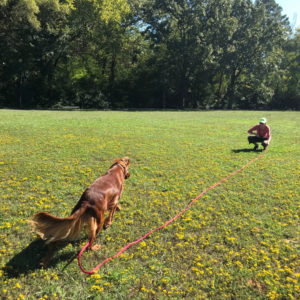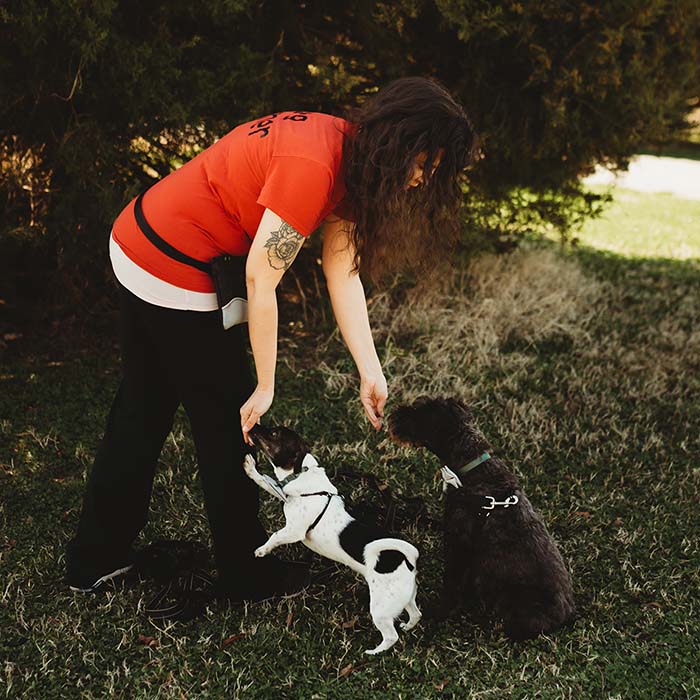Rochester* is cute–that sort of small, fluffy dog that makes a human just want to grab him and snuggle, like we would a teddy bear.
Our temptation is his fear, however, which is what I suspected when I entered his home for the first time for a private lesson.
I greeted all the people, and then spotted Rochester standing a few feet away to my left. He started barking.
“He won’t stop barking when people come in the door,” his owner said, a bit embarrassed.
“That’s okay,” I said.
I’d seen that sort of behavior before.
One of the first times was a few years ago, when I was still training for Philly Unleashed and teaching a new employee on the farm. We had a large, black dog who didn’t like this person, especially in our morning playgroups.

The new person was like a lot of people I knew, myself included–we wanted the dogs to like us. When they bark at us or avoid us, it can feel bad. Instead, however, we should remember that dogs have their preferences just like we do, and that not every dog needs a good ol’ very human greeting.
This dog would be fine until the new person entered the group, and then he wouldn’t stop barking.
To make matters worse, the employee would lock eyes with him, and approach him, her arms outstretched, saying, “It’s okay. Everything’s okay.”
But it wasn’t okay, and the barking intensified.
“Stop staring him down,” I told the employee. “Don’t approach him. Just ignore him.”
The dog stopped barking. The two even became friends.

Because no matter whether I was working with the large black dog and the tiny fluffy dog, there was a people problem, not a dog problem.
Rochester had started an offensive barking to prevent people from being rude to him. Most people, upon entering the house, would make a beeline for him, loom over him, and even grab him. For a little dog, being approached by strangers like that can be terrifying.
So that day, I didn’t approach him. I didn’t even look at him. Out came some treats, and I tossed him a few. We were pals in about 20 seconds.
A common phrase in my lessons these days has been, “It’s like he’s a different dog.”
I’m no dog whisperer, truly. But I’ve learned how to communicate, and I’d be happy to show you.
*Some details have been changed.
—
Elizabeth Silverstein has been working with dogs since 2012. She became a dog walker and then a dog trainer, fulfilling a life-long dream to learn animal behavior. She trained dogs on a southern New Jersey farm until 2018, when she moved to Little Rock and started her own business. Telltail Dog Training is all about effective and concise communication that builds trust and relationships. Email her at info (at) telltaildogtraining (dot) com.



